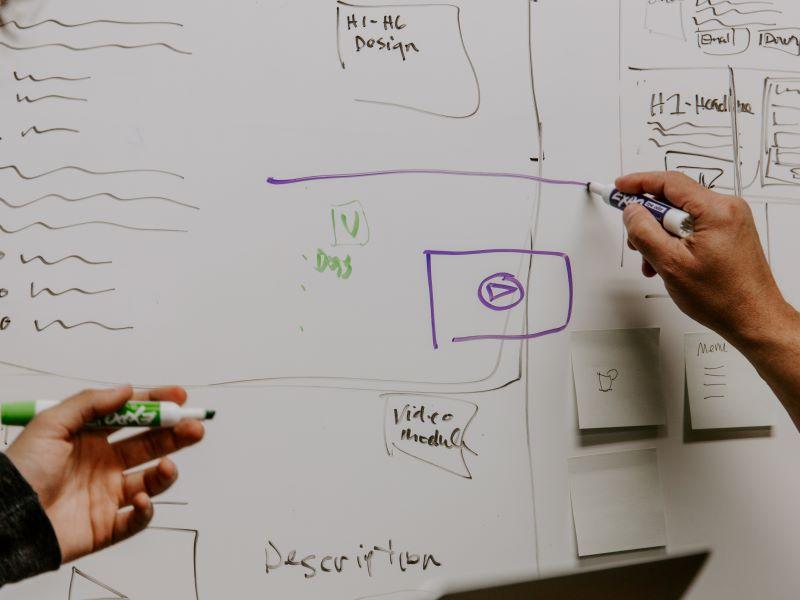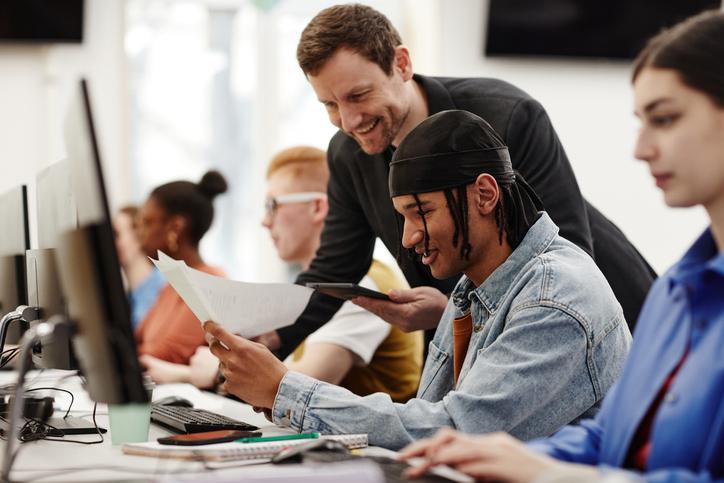Asking students for their opinions is like taking a snapshot of their perspectives; co-creation invites them behind the camera. Yet, too often, seeking out student voices in the context of programme and event creation includes analysing survey results, asking a few student leaders for feedback or for their opinions on surface-level decisions such as food or giveaways. This might elicit valuable information but it’s not co-creation. When students are brought into the planning process as true collaborators, they participate in a co-curricular learning experience and gain valuable skills such as problem-solving, teamwork and project management. Equally important, the resulting programmes tend to feel more relevant, inclusive and meaningful to students because they helped shape them.
And when students believe their opinions and actions matter, they’re more likely to experience a sense of belonging.
- Co-creation: how to find the ‘super’ in supervision
- How can Jenga build course co-creation?
- Shape the next generation of project managers with co-creation
Co-creation doesn’t require a complete overhaul of your planning process. You can start small with the students already in your orbit, such as student employees, volunteers or other student leaders, and begin to infuse it into your everyday practices, growing your process over time.
Here are five tips for approaching co-creation with students in your co-curricular work:
Share the ‘why’
Co-creation works best when everyone is on the same page and understands the purpose behind a project. As higher education practitioners, we often draw on mission statements, strategic priorities, shared language and institutional values to inform our programme planning. But students might not be aware of or have access to this information. Providing it to students at the beginning helps them understand the big picture and navigate challenging or sensitive topics.
For example, you might ask a student collaborator to change a word in a programme title so that it better aligns with the verbiage used in divisional messaging and stated priorities. Without explaining the reasoning behind the request, your feedback might feel arbitrary. Taking the time to explain the “why” behind your thought processes turns feedback moments into learning opportunities. It also models contextual thinking and effective communication that students can take into their future workplaces.
Start small
Look for opportunities to embed co-creation into your current operations.
Ask yourself: what parts of my planning process could be adapted as a learning experience? Even small contributions – such as helping determine programme goals and content delivery, organising event logistics or developing marketing materials – can help students see themselves as capable partners in your work. When thinking of co-creation opportunities, connect the task and process to skills that students will be able to articulate later, such as project management, event design, communication and collaboration.
Be clear about expectations and responsibilities
Clarity is key to supporting student learning during co-creation of programmes. From the beginning, outline both the students’ and your responsibilities: key deadlines, deliverables and expectations around communication. Being clear increases students’ confidence and self-efficacy, reduces ambiguity and creates more equitable experiences across diverse learner backgrounds. It also enhances accountability and ensures alignment between creative ideas and departmental goals.
A simple and effective strategy is using a shared project management platform (such as Trello, Asana or Teams) to organise the different aspects of the programme and centralise communication. This not only keeps projects on track but exposes students to tools and workflows that are common in professional environments, adding another transferable skill to their repertoire.
Create guard rails, not roadblocks
Students often bring big, imaginative ideas to the table; that’s part of the magic of co-creation. It’s easy to default to “no” when something feels unrealistic but a better approach comes from the world of improv: “Yes, and…”
Acknowledge the energy and value in their idea, then collaborate on how it might be shaped to better fit your institutional reality. Invite them to tell you more. Ask questions that help students think through potential obstacles and brainstorm solutions together. As higher education professionals, we can provide context, institutional awareness and resources that allow their creativity to thrive within reasonable or expected parameters or, in some scenarios, fail safely.
Build in reflection and feedback
Co-creation is as much about learning through the process as it is producing a programme. Build in moments for reflection, feedback and celebration throughout your time working together, not just at the end. Encourage students to consider what they’ve learned, how they’ve solved problems and what they might approach differently in the future.
Regular check-ins, paired with opportunities to share updates, insights or challenges help students articulate their learning and reinforce a sense of ownership. The more they can connect their experiences to their learning, the more meaningful the process.
Think of these tips as creating an environment where co-creation can flourish. However, the key to success takes us back to Nevitt Sanford (1962): balancing challenge and support. Students who feel overly challenged without adequate support might feel defeated and disengage from the process, whereas students who receive too much support in carrying out their responsibilities miss out on development. It often takes more time, preparation and patience to coach students through co-creation than to do it yourself, but the investment pays off.
Higher education thrives when students are not only participants but partners in their educational experience. They gain confidence, transferable skills and a deeper sense of belonging, while you gain partners who bring new ideas and perspectives to your work. Next time you’re tasked with creating a programme, don’t just ask: “What might students want?” but “What might we build together?”
Melissa Gerrior is director of student events and high-impact practices, belonging and student support at Georgia Institute of Technology. Jennifer Graham is associate dean of students for student integrity and success at Georgia College & State University.
If you would like advice and insight from academics and university staff delivered direct to your inbox each week, sign up for the Campus newsletter.




comment